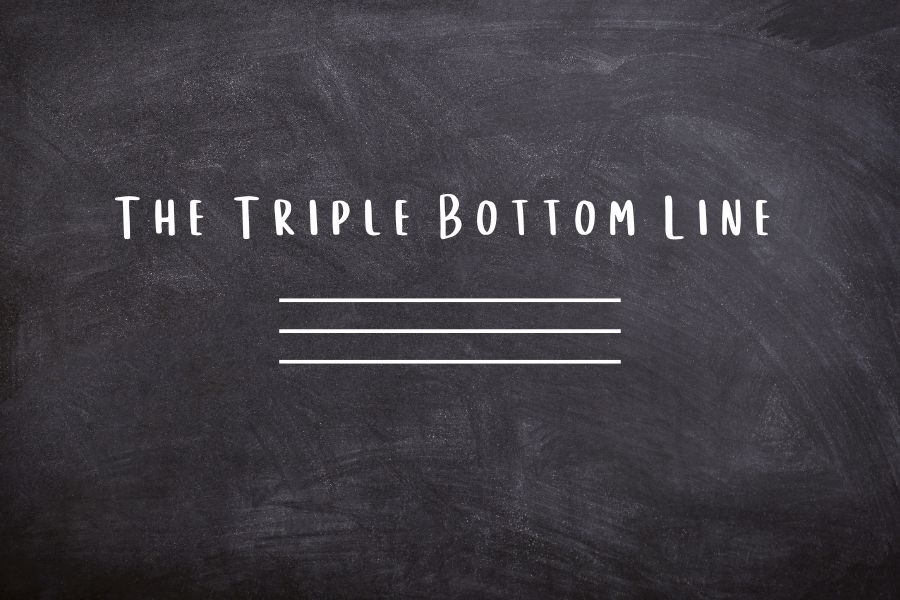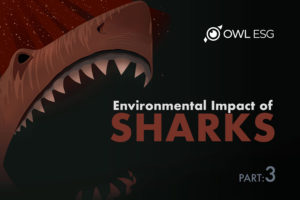Improve the world and make money by doing so. Is this mostly public relations fluff and wishful thinking, or does it really work? In this article, we discuss what “doing well by doing good” and the Triple Bottom Line (TBL) mean and offer some examples that we find inspirational. Spoiler alert: this is not about philanthropy.
First, we know that many of us who are immersed in ESG and sustainability have a tendency to toss around many terms (Scope 3 emissions! Natural capital! Supply chain slavery!) and acronyms (SDGs! SFDR! DEI!) and assume everyone knows what we are talking about. So, let’s begin at the beginning. What does TBL mean?
As the name suggests, the theory of TBL says that instead of a single bottom line (profit margins, ROE, that sort of thing), there should be three: profit, people, and the planet. British management consultant and sustainability guru John Elkington coined the phrase in 1994 (almost 30 years ago!). The well-intentioned and generally well-informed people who contributed to Investopedia on this topic wrote that adopting a triple bottom line perspective means that a company focuses on social and environmental concerns as much as its profits. We’re not sure how one would measure “as much as” here, so we would prefer to say “focus on profits and on social and environmental concerns, simultaneously.”
In other words, in addition to caring about shareholder returns, the TBL approach looks at a company’s environmental impact and its commitment to corporate social responsibility over time. Right away we want to start arguing that these are not separate bottom lines, that these things are intertwined—a commitment to good social and environmental stewardship boosts shareholder returns. But we’ll never get on with this article if we keep stopping the discussion to argue such points, so let’s move on.
Measuring the Triple Bottom Line (TBL)
OWL excels at providing the range of data that investors and companies need to measure and analyze all things related to ESG, so we feel a responsibility to acknowledge that measuring a company’s performance in terms of TBL is challenging, and, in the current state of sustainability reporting, it will require both creativity and some tolerance for navigating ambiguity.
Measuring financial returns is fairly straightforward (although accounting rules produce profitability measures that are not embraced by all – that’s why many companies report non-GAAP earnings. But again, we digress). However, there is little guidance, if any, on how to measure a company’s bottom line with respect to its environmental and social impacts. There are few disclosure requirements in this arena, let alone calculations that have been blessed by a third-party such as the Value Reporting Foundation (formed by the merger of the Sustainability Accounting Standards Board and the International Integrated Reporting Council), that serves as the sustainability disclosure equivalent of the U.S.’s FASB or the IASB.
Measuring the Environment Bottom Line
With respect to the impact on the environment, progress on disclosure is a work-in-progress. Reporting on some aspects of carbon emissions is improving in quality and availability (for example, when you book a flight you can now see the CO2 emissions associated with going from A to B on that aircraft), but other aspects of environmental impact reporting remain elusive. Companies report inconsistently, incompletely, or not at all, on various things that would be useful to know, such as the amount of waste they generate, the extent to which their products include recycled materials, and how they reduce water usage, among many other environmental considerations. There is more work to be done and there must be a cost-benefit analysis associated with the effort.
Measuring the Social Bottom Line
Reporting on social metrics, or the “people” impact, could include things like average employee payroll in each region to show the company pays a living wage, average employee benefits beyond pay, or demographics showing the distribution of employees by age, race, sexual orientation, or religious affiliation. Of course, some of this information is sensitive and must be provided voluntarily by employees, which means the resulting statistics might not accurately represent the company’s workforce.
Some suggestions for TBL reporting, such as disclosing gross margins by geographical region to show consistent or equitable pricing across demographic groups, may sound nice but are almost certainly not feasible in practice. Without getting into the accounting weeds, this would require assumptions about internal transfer pricing for the cost of goods sold sourced from various places, the impact of foreign exchange, …oops, we’re in the weeds.
Financial Benefits of the Triple Bottom Line Approach
As we noted at the beginning, the motivation behind taking a TBL view is at the core of ESG and sustainability. We do not have the room here to describe the many reasons this pays off but will mention a few, just to whet the appetite.
- Investing in a more satisfied, more engaged workforce increases retention, reducing costly turnover.
- Showing a commitment to reducing negative environmental impacts can attract and help retain new customers and employees. It can also lead to new products that create new sources of revenue.
- Costs savings. For example, converting a fleet of delivery trucks to electric vehicles requires an upfront investment but will save money over the longer-term due to a lower cost per mile driven and less maintenance.
Short-term thinking is the enemy of the TBL approach. For example, a clothing manufacturer could maximize short-term profits by hiring cheap labor in poor countries and dumping waste from chemical dyes in rivers. In the long-term, not only is this environmentally destructive, it can do great damage to a company’s reputation.
Does it work?
So, does a Triple Bottom Line approach actually work? Can companies and investors make a competitive (perhaps even superior) financial return on investment by adopting this approach? OWL was founded on the belief that this is what the world must do to build an economically successful future on a livable planet, but don’t take our word for it. Here are some big companies that are doing well by doing good.
- MasterCard – The company’s CEO stated that “when the world thrives, businesses thrive,” which is good for the digital payments business. He emphasizes that importance of connecting people in developing regions to a digital marketplace and working with public and private partners to build inclusive, accessible and sustainable cities of the future.
- Patagonia – Known for its environmental focus (98% of the company’s products are made with recycled materials) and 100% of its U.S. electricity needs are met with renewable energy), Patagonia also has programs to ensure its products are produced under “safe, fair, legal and humane working conditions,” and publishes information about its facilities and suppliers so that customers know where and how their clothes are made.This private company is estimated to generate roughly $100 million in profits annually.
- Chipotle – The company, which ties its mission to “cultivating a better world” achieved a 51% waste diversion rate through recycling, composting and waste-to-energy programs, bought more than 28 million pounds of organic and transitional ingredients and purchased over 31 million pounds of local produce. The company notes this is partly self-serving (we think that’s a good thing), saying “If we don’t invest to make sure we have another generation of organic farmers, we won’t be able to stay true to our goals and who we are.”
On a much smaller scale, we offer this TED talk by an entrepreneurial doctor who serves Medicaid patients only and is making money by delivering health care in a way that turns all assumptions upside-down. He has never had to advertise and is growing at 25 percent a year. He reduces costs for the entire healthcare system by keeping patients out of the ER and treating them before a small problem turns into a big ones.Evaluating whether and how companies are doing well by doing good can be complicated, requiring good data and the ability to dig into details. OWL is dedicated to providing corporations and investors with the data they need to meet this challenge. Contact us to learn how we can help you improve your analyses.




